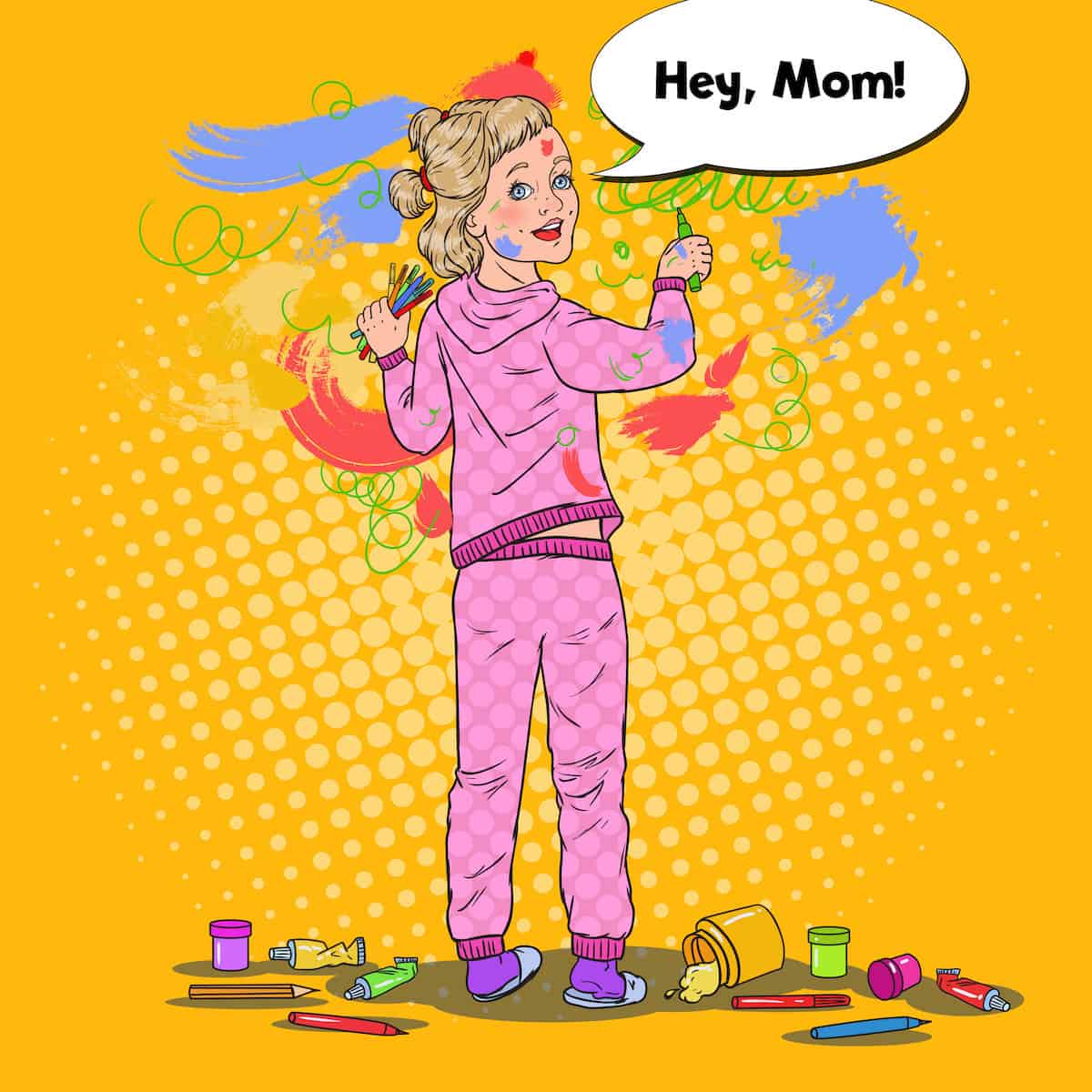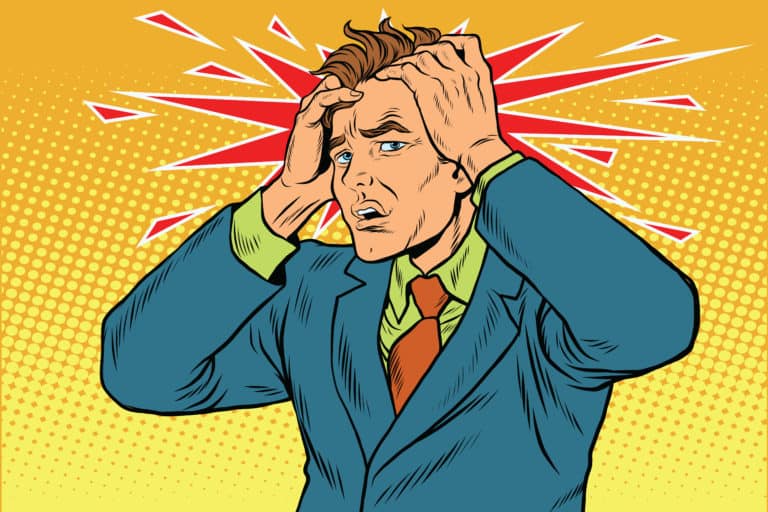Do you think your child might have attention deficit hyperactivity disorder? If so, it’s essential to be aware of the signs and symptoms of this disorder.
Children with ADHD may have trouble focusing, staying organized, and controlling their behaviour. Knowing what you’re searching for when seeking help can be difficult.
The symptoms of ADHD are only the beginning; you’ll want to look for specific behaviours that can help you make a diagnosis.
When you’re told that your child is having difficulties sitting attentively at school or getting into trouble, it’s understandable that you’d be concerned. The dreaded Parents’ Evening may be distressing enough as it is, but hearing that your child has attention deficit hyperactivity disorder (ADHD) only adds to the tension.
It is crucial to understand the significance of ADHD in today’s world. As a parent who wants to learn more about ADHD and what it might mean for your child and the rest of your family, where do you go for help?
If you’re worried your child might have ADHD, the first step is to talk to your GP. They can offer you some guidance and support and refer you to a specialist if necessary. Look at some of the common signs of ADHD below and see if any sound familiar.
Common signs of ADHD in children
A professional diagnosis is required to determine whether or not your youngster has ADHD. There are, however, some typical indicators that suggest that your kid has ADHD, including:
- Daydreaming a lot
- Being easily distracted
- Having a short attention span
- Appearing fidgety or hyperactive
- Impulsive behaviour
- Talking excessively
- Interrupting others
- Having difficulty completing tasks
- Being forgetful or losing things often
- Blurting out answers before hearing the full question
- Able to focus intensely on tasks they enjoy
- Outbursts when plans change or things don’t go their way
A diagnosis of ADHD is based on several criteria rather than one specific behaviour (or lack of action, for that matter). However, if you think your kid has ADHD, consulting with an expert is a good idea. Getting the condition identified early has its advantages.
It’ll allow you to put in place coping mechanisms and develop a support system for your kid, which can make a world of difference.
The symptoms of ADHD in children may be hard to detect.
Monitoring the indicators is critical to get your child the treatment they require as quickly as possible.
ADHD is different from person to person. Someone with ADHD may have more symptoms than others or not exhibit any of the signs on this list.
The most common symptoms of ADHD:
Hyperactivity
Your child may find it difficult to sit still, both at home and at school. They may be in constant motion, running or climbing when they should be sitting quietly.
Impulsivity
This symptom is often linked to hyperactivity. Your child may speak out of turn or interrupt conversations without thinking first. They may also act without considering the consequences of their actions.
Inattention
Your child may struggle to focus on tasks at home and school. Children with ADHD frequently daydream and become sidetracked. This might make it difficult for them to concentrate, especially if the task at hand is boring.
Any child can be very active or have a short attention span, but children with ADHD experience these symptoms stronger or more frequently than other kids their age. This often leads to them having difficulty in school and at home.
The three different subtypes of ADHD
ADHD is divided into three subtypes, each of which has different symptoms. To be eligible for a subtype, at least six symptoms must have been present at home and/or school for over six months.
In addition, the following symptoms must have occurred before a youngster is 12 years old. They must have impacted a child’s schoolwork and social life and can’t be explained by another condition, such as anxiety or personality disorder.
The three subtypes of ADHD are:
ADHD, predominantly inattentive type
This subtype is characterized by symptoms of inattention (listed above). Hyperactivity and impulsivity are not as prominent. A child will display at least six symptoms of inattention but less than five symptoms of hyperactivity and impulsivity.
ADHD, predominantly hyperactive-impulsive type
This subtype is the opposite of the inattentive type. A child will have at least six symptoms of hyperactivity and impulsivity but less than five symptoms of inattention.
ADHD, combined type
A child shows at least six symptoms of inattention and six symptoms of hyperactivity/impulsivity. This is the most common subtype of ADHD.
Inattentive ADHD
Children with inattentive characteristics often struggle with schoolwork, causing them to be misunderstood. Inattentive symptoms include appearing forgetful, or in a world of their own; they will forget to do their homework or to hand in important school papers.
More interesting activities may divert their attention away from routine tasks, and more intriguing tasks might take up so much of their thinking that they cannot transition to anything new.
Inconsistency is another sign. For instance, a child may be able to focus on a task for one short period but not be able to do so again for an extended period. This pattern of inattention makes it difficult for the child to follow through with long-term projects, like homework assignments or reading a book.
To qualify for a diagnosis of inattentive type ADHD, the CDC says that a child must have six or more symptoms of inattentiveness from the list below for at least six months:
Inattentive symptoms include:
- Lacks close attention to detail or makes careless mistakes
- Often has difficulty staying focused on tasks or games
- Doesn’t appear to listen when spoken to directly
- Struggles to understand instructions for a task, and as a result, leaves tasks unfinished or incomplete
- Has trouble planning or organizing tasks
- Avoids or dislikes complicated tasks that take a long time to complete
- Frequently loses or misplaces important items
- Easily distracted by things outside of their current task
- Forgets daily activities
Hyperactive/Impulsive ADHD
If your youngster bounces off the walls, you might wonder if they have ADHD. Children with this subtype are fidgety and can’t sit still; these are classic signs of hyperactivity. They may be in constant motion, running or climbing when they should be sitting quietly.
You may also see outbursts of energy, like a sudden need to dash around the room or an inability to stay seated during dinner. These kids often have trouble sleeping because they can’t wind down at night.
They may also exhibit impulsive behaviors, such as blurting out answers before hearing the whole question or acting without thinking. Impulsive characteristics can lead to problems at home and school and social difficulties.
Hyperactive-impulsive characteristics in a child tend to be easier to diagnose because the child is so active and has constant energy. The class clown, the daredevil, and the child who’s always on the go are often diagnosed with this subtype.
They may also be diagnosed earlier because their behaviour is more obvious than that of a child with inattentive ADHD, who may be quietly struggling.
To be diagnosed with hyperactive/impulsive type ADHD, a youngster or teen must have at least six of the hyperactive behaviors or impulsive symptoms described by the CDC:
- Often taps their hands or feet or squirm in their seat
- Often leaves their seat when expected to remain seated
- Runs or climbs when it is inappropriate
- Struggles to participate in leisure activities quietly
- Always active and needs to move
- Shouts out answers before hearing the entire question
- Talks excessively for their age group
- Interrupts or intrudes on other people’s conversations
- Has difficulty taking turns in a game or waiting in a line
Combined Type ADHD
Children with inattentive and hyperactive/impulsive ADHD characteristics will have trouble sustaining attention in classroom settings and completing homework assignments. The child may also be disruptive, blurting out answers, having difficulty taking turns, and interrupting others.
This type of ADHD is more common in boys than girls. It’s also the most severe subtype, with symptoms that can cause problems at home and school and social difficulties.
Most children with ADHD are diagnosed as being in the combined type and have both inattentive characteristics combined with hyperactive and impulsive characteristics.
As a result, children showing combined types of symptoms may struggle with keeping their attention on tasks, display disruptive behavior, and struggle to complete daily tasks such as school assignments.
To qualify for a diagnosis of combined type ADHD, the CDC says that a child must have six or more symptoms from both the inattentive and hyperactive/impulsive lists.
Early signs of ADHD
There may be some early indicators of ADHD in preschool-aged children. However, the symptoms might be tough to detect since toddlers and younger kids are naturally energetic and have short attention spans.
In the UK, a diagnosis of ADHD can’t be made in children under the age of five. However, if a parent or carer has concerns about their child’s behaviour, they should speak to their GP, who may refer them for a specialist assessment and suggest alternative treatments.
In the US, children can be diagnosed with ADHD from age four. The American Academy of Pediatrics (AAP) recommends that a doctor assess children aged four to five with inattention, hyperactivity, or impulsivity symptoms.
The first types of therapy for children under six in the United States are parent training and child behavioral treatment. Behavioral therapy and training courses are not effective treatments, but these treatment options for children can be useful tools to help with manage conflict with parents.
ADHD characteristics in children ages 3–5
Signs of ADHD do not always appear clearly to parents of young children. The symptoms are usually particularly severe if a parent suspects their child has ADHD at this age.
A 3 to 5-year-old with ADHD may be unable to sit still during quiet times or have trouble playing with others since they impulsively steal toys, struggle to stay in games, break things, or otherwise disrupt the game.
Parents may also believe their child has ADHD because their child’s behaviour is dangerously impulsive. For example, they may dash across the road without looking, get lost in a crowd while following someone’s dog, or climb tall, wobbly pieces of furniture at home.
ADHD characteristics in children ages 6–12
The signs and impact of ADHD become more visible when a child turns six because they start going to school for a full day and receive regular updates from teachers.
Children may have difficulty following classroom norms at this age and frequently receive negative attention from their teachers and parents. It indicates that something is wrong when a teacher informs you that the kid has trouble concentrating, disrupts others or is talkative in class.
Children often feel misunderstood because they can’t control their ADHD symptoms. They may become withdrawn and have low self-esteem. As a result, they might stop participating in class and avoid social activities with their peers.
Some children are labelled class clowns since they frequently try to gain attention and approval through humour. Others may grow up as school bullies due to their inability to read social cues and process emotions.
Signs of ADHD in teenagers
he symptoms of ADHD may vary according to a child’s age. Your youngster may initially have hyperactive behaviours but later develop more inattentive ones as they get older and grow. Children can outgrow or better manage their ADHD, sometimes leading to fewer adolescent problems.
However, this isn’t the case for all teens. ADHD can become harder to control during these years as stressors and hormones mount.
A teenager with ADHD may struggle to complete tasks, follow through on commitments, and meet deadlines. They may procrastinate on assignments, forget to turn in paperwork or lose track of important items like books or electronic devices.
Teens with ADHD may also struggle with impulsivity, making them more likely to take risks without thinking about the consequences. This can lead to accidents, fights, and other problems.
Diagnosing ADHD as a teenager
Although ADHD symptoms may vary in adolescents, the condition does not generally appear for the first time during adolescence.
A teenager diagnosed with ADHD is most likely to have been in an environment where their symptoms were not visible or were not problematic. For example, they may have had a parent at home who helped them stay organized and on track with their schoolwork.
Masking symptoms is a common strategy for dealing with ADHD. As demands and expectations increase during adolescence, however, it becomes harder to hide the symptoms of ADHD. This can lead to academic problems, social difficulties, and behavioural issues.
The impact of ADHD on family dynamics
The impact of ADHD on family dynamics can be multifaceted and profound, affecting family members in unique ways. Parents may grapple with increased stress levels as they navigate the complexities of securing appropriate educational accommodations for school age children, managing poor behavior, and coordinating everyday life.
The unpredictable and impulsive nature of children with attention deficit disorder can lead to heightened tension and frustration within the household, potentially causing relationship challenges and leading to feelings of guilt or inadequacy among parents.
Siblings, in turn, might experience feelings of neglect or resentment, as the child with ADHD might require disproportionate attention and resources. The family’s daily tasks and routines may need to be adjusted to accommodate the child’s needs, which can disrupt the family equilibrium.
However, it’s also important to note that families can develop resilience and a unique bond through facing ADHD-related challenges together. Learning effective coping strategies, focusing on positive behavior instead of negative behavior, and understanding each member’s perspective can all foster a nurturing environment, enabling the family to adapt and thrive.
How ADHD is different in boys and girls
Attention deficit hyperactivity disorder in girls often goes unnoticed. Girls typically display less problematic behaviors and be less disruptive than boys.
Research shows that boys are more likely to be diagnosed with ADHD than girls, with a male to female ratio of approximately 4:1 in community samples.
Boys are more likely to have persistent symptoms of hyperactive and impulsive ADHD, which means they’re constantly on the go and have trouble sitting still. They may squirm in their seat, fidget with their hands or feet, or talk excessively.
Another explanation may be that hyperactive boys are more likely to attract negative attention from their teachers. A girl may go undiagnosed and underappreciated because she doesn’t show the hyperactive types of symptoms and has instead been labelled as a daydreamer, quieter, or unable to grasp her schoolwork.
ADHD in black and ethnic minorities
ADHD in black and ethnic minority children is often undiagnosed and is still massively understudied.
In the United States, 36% of black and 30% of Latino children with ADHD were on ADHD medication, whereas 65% of white youngsters with ADHD were medicated, leaving many non-white kids untreated.
This might be due to a lack of awareness in getting children examined, difficulties in gaining access to care, and the tendency for some specialists to underdiagnose ADHD while examining youngsters in certain areas.
There’s a need for further study to determine why there is such a disparity in diagnosis and treatment rates among black, Asian, and Latino kids with ADHD in the US and the UK.
The acknowledgement and acceptance that Black (including Black mixed) communities also experience autism and ADHD is less known, leading to serious societal imbalances.
Suzy Rowland, author of S.E.N.D. in the Clowns: Essential ADHD/Autism Family Guide, wrote in her article for Open Access Government about the critical need for research into Black autism and ADHD and asked, Where is the research into Black autism and ADHD?
Suzy wrote that when a psychiatrist initially assessed her son Lucas, she was told that “Lucas’s behaviour was a reaction to having been bullied at his first primary school.” She added that the psychiatrist “believed – because of his relative immaturity – that he was unable to communicate how he was feeling; her opinion was that he didn’t have ADHD.” Her son was subsequently given a diagnosis of ADHD.
Early developmental problems in Black children are frequently perceived as social or economic in origin, when they may also be health or behavioural issues. However, limiting experts’ perspective to a restricted lens of social class and disadvantage can cloud them to genuine medical or emotional demands. Almost all psychologists believe that most child behaviours are functional. Failure to investigate the reasons for that behaviour, including childhood trauma, by medical, health, and educational experts may result in significant and long-lasting mental health problems.
Strategies for Managing ADHD at Home
Managing ADHD at home requires a combination of structure, routine, and positive reinforcement. Establishing consistent daily routines can help children with ADHD understand what to expect and what is expected of them, reducing anxiety and improving behavior.
Parents should also create a quiet, organized workspace for homework and study, minimizing distractions. Positive reinforcement through rewards and praise for good behavior can motivate children and reinforce self-esteem.
Additionally, setting clear and consistent rules and consequences helps in managing impulsive and disruptive behaviors, while also teaching responsibility and accountability.
The Role of Nutrition and Lifestyle in Managing ADHD
Nutrition and lifestyle play a pivotal role in managing ADHD symptoms. A balanced diet rich in omega-3 fatty acids, protein, and complex carbohydrates can improve brain function and reduce hyperactivity.
Limiting the intake of sugary foods and additives is also advisable. Regular physical activity is essential, as it helps in improving concentration, reducing anxiety and depression, and promoting better sleep.
Adequate sleep is crucial, as insufficient sleep can exacerbate ADHD symptoms. Encouraging a healthy lifestyle and making better nutritional choices can significantly impact the overall well-being of a child with ADHD.
Educational Accommodations for Children with ADHD
An ADHD child in school will often benefit from accommodations to help them succeed academically. Some schools use individual plans to outline what specific accommodations and support will be offered to maximize their academic performance.
Accommodations may include extra time on tests, regular breaks for movement, modified assignments, and access to assistive technology.
Open communication between parents and educators is essential to monitor progress and adjust accommodations as needed. Advocating for the child’s educational needs ensures they receive the necessary support to thrive in a learning environment.
The Role of Medication in ADHD Management
Medication treatment is a common and effective component of ADHD management. Stimulant medications, such as methylphenidate and amphetamines, are often prescribed to increase attention and control impulsive behaviors. Nonstimulant medications like atomoxetine and guanfacine may also be used, especially when stimulants are ineffective or cause side effects.
It is crucial for parents to work closely with healthcare providers to find the right medication and dosage for their child, monitor for side effects, and adjust treatment as necessary. Medication, when used alongside alternative treatments, can significantly improve the quality of life for children with ADHD.
Behavioral Therapies and Interventions
Behavioral treatment and interventions can be useful tools for managing ADHD. Cognitive Behavioral Therapy (CBT) can help children develop coping mechanisms, improve self-esteem, and manage their symptoms more effectively.
Different parental courses equip parents with strategies to positively reinforce desired behaviors and discourage disruptive ones. Social skills training can assist children in developing better social interactions and improving peer relationships.
These therapies, often in conjunction with medication, offer a holistic approach to managing ADHD, addressing both the behavioral and emotional aspects of the disorder.
Self-Care for Parents of Children with ADHD
Parenting a child with ADHD is demanding, making self-care for parents paramount. Parents should prioritize their well-being by maintaining a support network of friends, family, and professionals.
Engaging in relaxation techniques, regular exercise, and hobbies can help alleviate stress and prevent burnout. Talking to Mental Health Counselors or joining support groups can provide valuable insights and coping strategies. By prioritizing self-care, parents can maintain the physical and emotional resilience needed to support their child effectively.
Long-Term Outlook and Adult ADHD
The long-term outlook for individuals with ADHD is variable, with many learning to manage their symptoms effectively and lead successful lives. Early intervention, ongoing support, and adaptive strategies contribute to better outcomes.
However, many individuals continue to experience challenges related to ADHD in adulthood, including difficulties with organization, time management, and relationships. Adults with ADHD may benefit from continued therapy, medication, and workplace accommodations. Understanding and addressing the evolving needs of individuals with ADHD is crucial for long-term success and well-being.
What next?
Knowledge is a powerful tool in the fight against ADHD. The more a parent learns about ADHD, the easier it will be to comprehend what their child is going through.
Getting a diagnosis is just the beginning. Once a child is diagnosed with ADHD, they will likely need medication, therapy, and accommodations at school. But with the right treatment plan, most children with ADHD can lead happy and successful lives.
ADHD is a lifelong condition, but parents can help their children get the treatment they need to succeed by learning about the signs and symptoms.
Showing kindness and compassion for someone with ADHD will also help them thrive in their environment. It’s important to remember that frustrating behaviours are often outside their control.
If you found this article helpful, please share it with others who might benefit from learning more about ADHD. And if you have any questions or would like to share your experience raising a child with ADHD, please comment below. Thanks for reading!
Last edited: September 2023








